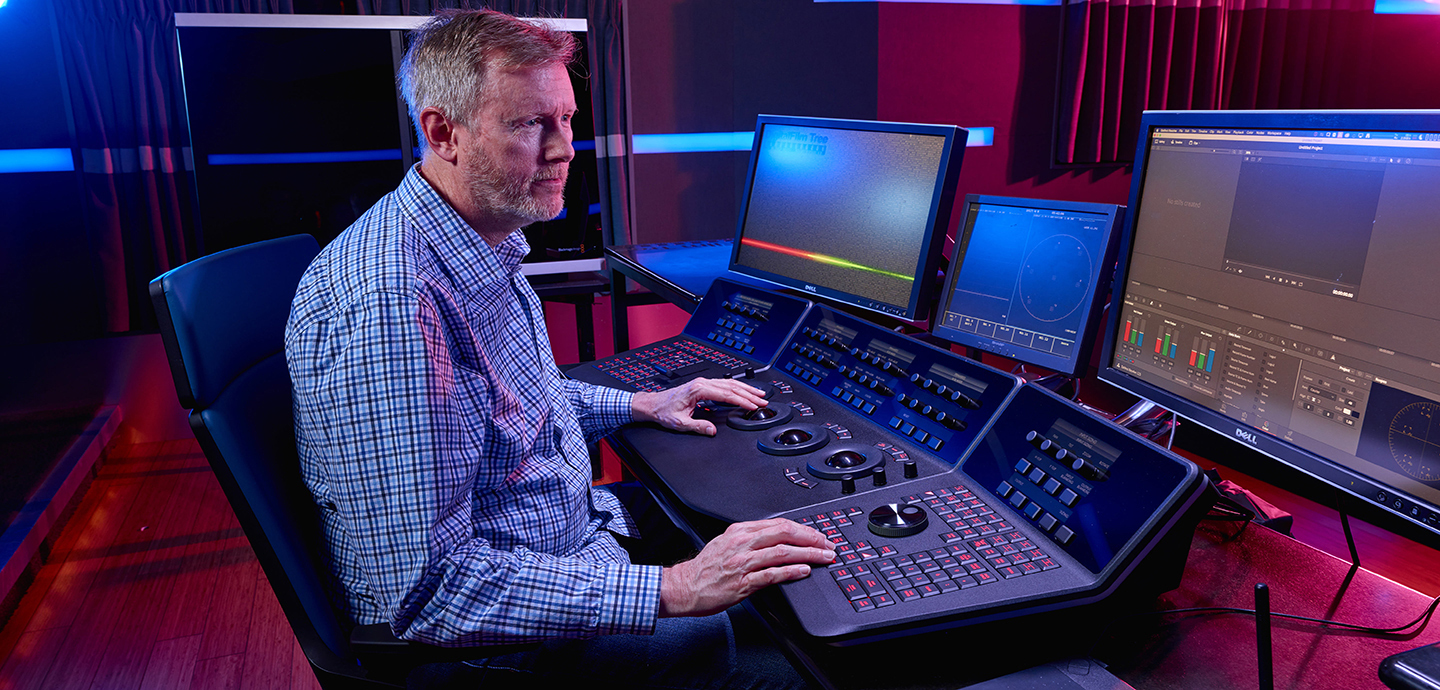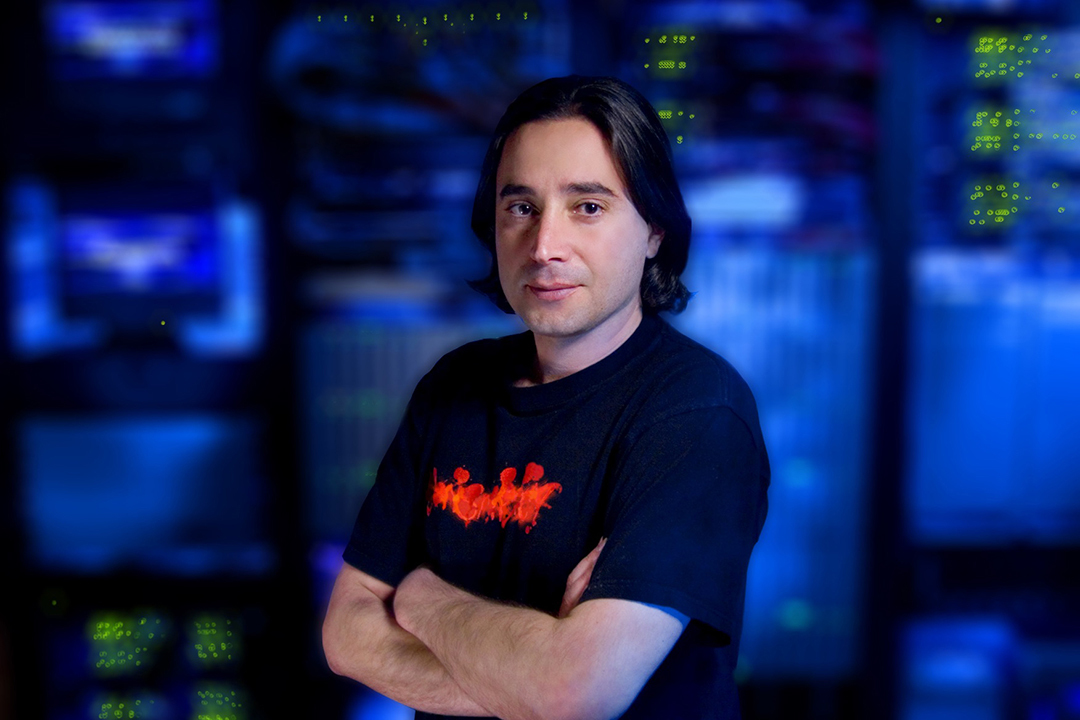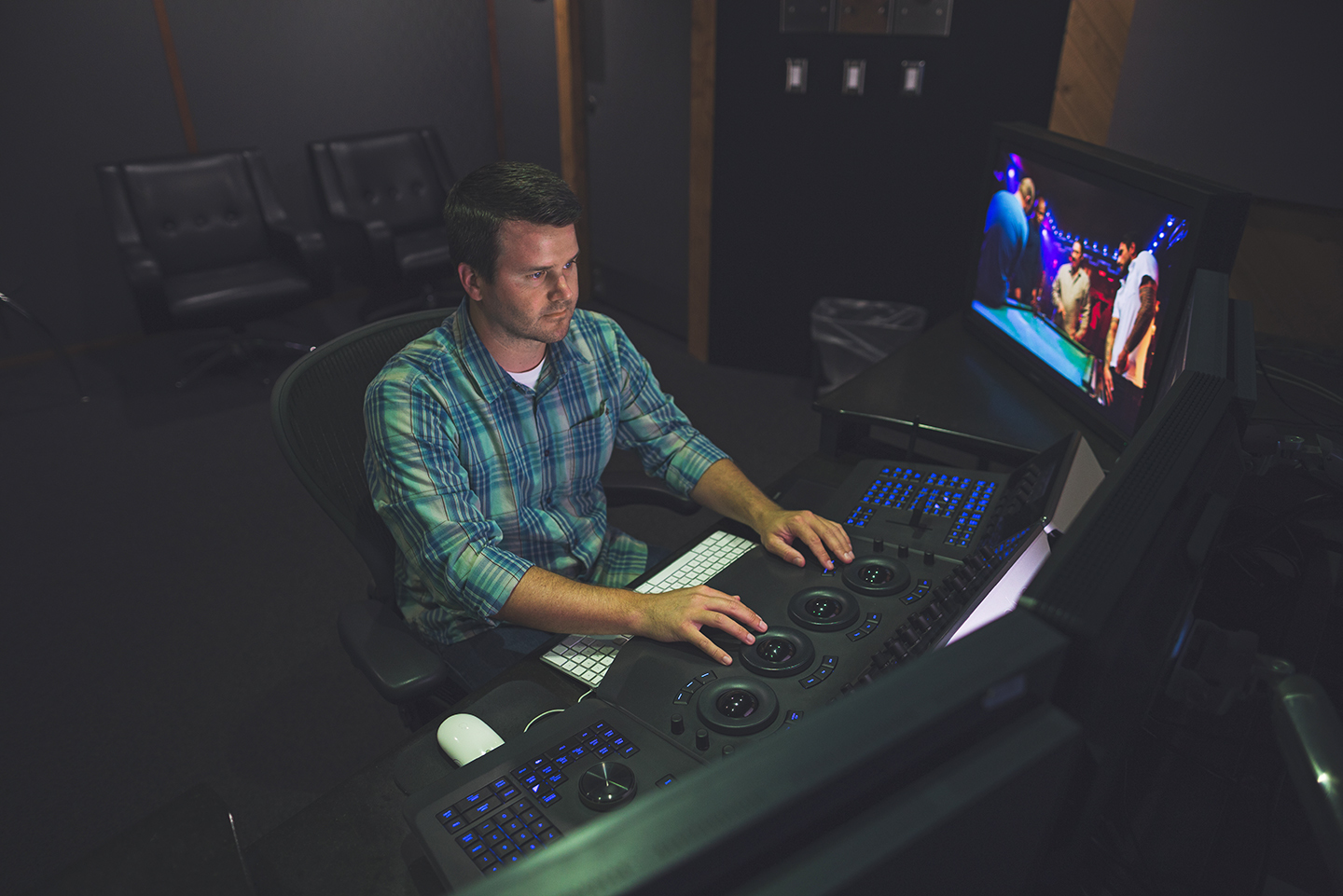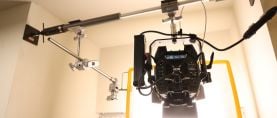
DigitalFilm Tree Is All-In On Resolve
Known to the industry as DFT, the post, color and VFX house is the first company to move to an entirely Blackmagic editing backbone.
Known to the industry as DFT, the post, color and VFX house is the first company to move to an entirely Blackmagic Resolve editing backbone.
Long established in the fields of post and color as an innovator, DigitalFilm Tree, also called DFT, was established in 1999 in the heart of rock-n’-roll-era Sunset, right next to the Rainbow Room. Starting as an editing training ground for the brand new digital editing system, Final Cut Pro, their enthusiasm for nascent technologies led to almost immediate success on digital dailies, DIT and file-based workflow solutions for ambitious early adoption projects like Cold Mountain, Napoleon Dynamite and Scrubs.

In 2009, Senior Colorist Patrick Woodward was the first person to use Blackmagic Design’s DaVinci Resolve color mastering program on a television show for the premiere season of NCIS: Los Angeles. Since, DFT’s relationship with Blackmagic has only continued to grow.
The DFT team has been working intensively with the Resolve 15 beta during the updates since it was first announced during NAB in April, and have chosen along the way to move their considerable post infrastructures entirely to the DaVinci workflows. Verified by Blackmagic, their Resolve pipeline, tailor-made to create a verbose, rapid communication and collaboration system between productions, editors, and colorists, is currently the fastest in the world.

“The dailies were on DVD ROM,” laughs Ramy Katrib, Founder and CEO of DigitalFilm Tree, about the company’s auspicious beginnings. “When it first came out, during the transition from analog to a FireWire protocol, and we were right there. I was working in telecine, so I figured out how to transfer film to that cute little DV tape in 1998."
"Then we digitized it through FireWire, which to me was the beginning of the digital revolution, because Apple had ‘consumerized’ video. This was at least four years before high definition entered our space. Then we helped the industry transition from what used to be an AVID three-quarter Beta SP digital workflow, to offlining at digital quality. We were fortunate to work on our first projects, Roger Avery's The Rules of Attraction, and Steven Soderbergh’s Full Frontal, which attracted the attention of Walter Murch.”

Murch received his fourth Academy Award nomination for his edit with Final Cut Pro for Cold Mountain.
DFT moved to an expansive new building on Cahuenga Blvd. West in Hollywood nearly a decade ago, but the facilities are continually being modified. Walled by whiteboard, the conference room is the hub to several advanced editing and screening multimedia rooms.
Each of these spaces is wired for a sophisticated blend of services for cloud-based needs, remote dailies, object storage and file archives, as well as data management, full-service VFX, and color grading for creative and online editorial. Operating on a mix of maximized Mac, Windows and Linux systems, they’re finding a lot of bleed-through as to what customers are requesting.

They’re seen mostly in HDR, 4K, UHD, and a trickle of 8K, though Katrib expects a lot more coming around the corner. DFT is currently converting its largest room into a Unity-inspired MOCAP and VR stage for the game development platform. Unity and other graphics programs have seen their presence expanding recently in productions worldwide.
“I'm not a visual effects editor, so I’m teaching myself some basic things so I can do some things quickly and just make the process that much easier for our clients,” says Senior Colorist Rick Dalby (seen in the header image) when asked about the transition to Resolve.

“It’s always been a go-to color corrector,” Dalby says. “It's a workhorse. It's fast, and it's progressed. People are seeing the power of being able to run off of Windows, Mac and Linux platforms with unlimited nodes, unlimited power. There are no limitations to what you can do. It now combines editing, visual effects, color, sound and delivery in one box.
“Our post departments have become so integrated that we now have a new service category we call ‘color effects,’” Katrib continues during a walking tour. “Our visual effects department is using Resolve and Fusion, as is our conform department, our color, obviously, and our master tape and file deliveries all now emanate from Resolve.
"So we're able to present our clients their projects in a constant ‘finished’ state, instead of the traditional way that post houses do it, where you make a change, someone in some other department applies that change and then it has to be round-tripped through some other application and then presented to the client when it is quote-unquote ‘done.’ When we manipulate something in Resolve and the client approves, it's done right then.
“We’ll routinely start doing things that are visual effects in the color suite, like tracking and simple VFX clean-up work. Now our clients don't have to kick it down to visual effects, they can do it right in color session, or vice versa.”
That aligns nicely with the remote dailies and post services that DFT offers. Calling it GeoPost, Katrib says that file-based workflows are continuously migrating towards the immediate, simultaneous access of the cloud.

Creating military-grade VPN-tunneling for cybersecurity, for security concerns, they offer tailor-made private servers for camera RAW storage and transport, or managed access to more conventional cloud services like Amazon’s AWS or Google. They’ve been providing remote dailies, post and effects on the TBS show Wrecked for the last three years, for example, which shoots in Fiji. For the production American Housewife, DFT coordinates remote color with satellite monitors for the DP to review and guide color sessions remotely without any sacrifices to image or compression quality.
Another show, The 100, utilizes a remote color setup in the executive producer’s home, and remote conform and titling set up in AP’s office. “There's this thing, which I call ‘IT logistics,’ where you figure out how to get the camera RAW from any location to some kind of centralized, secure server, as quickly as possible,” Katrib explains. “We orchestrate all that as if it's just dailies, but it has to do with VPN tunnels, security protocols, having everything ready by 6:00 AM, as if it was just routine, but, of course, it's not. It’s a combination of multidisciplinary artists, like IT people working hand-in-hand with post people, to create a secure tunnel and to orchestrate the dailies process and, most importantly, to manage the camera negative safely.”
Cloud services are interesting to DFT not just in eliminating inefficiencies, but also because object storage and the organizational possibilities of detailed metadata give DFT and their clients new ways to leverage previously stored content and assets. Currently, the industry largely relies on LTO tape storage technology, which requires for most cases a human to locate and retrieve clips and files. Retrieval can be costly, time-consuming and error prone. Coining the term ‘coopetition,’ Katrib says that many effects and post houses are finding themselves working together on many of the same productions, as well.
“We seem to pick the right horses,” explains Katrib. “We feel really awesome to be part of Resolve in the same way that we were part of Final Cut, so it feels like déjà vu. The media and entertainment industry as a whole is now transitioning, slowly but surely, to Internet Protocol. So it used to be physical, and then we transitioned to digital, then we transitioned to servers, or the cloud, and now we're transitioning to a lifestyle of sharing files and greater collaboration through the Internet right from the production to post production and to distribution.”
Follow Digital Film Tree on Instagram, Facebook and Twitter.
Stay up to date with American Cinematographer on Facebook, Instagram and Twitter.






